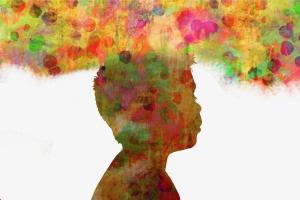It’s going to be generations—if ever—in which engineers will be able to create a humanoid robot with the ability to express emotions like the face of a child.
Take this short video I put together with my grandson and granddaughter. We were visiting a historical town in southern Oregon and wandered into a quaint coffee shop for a dose of caffeine. (The grandkids were having hot cocoa.) Amelie and Asher sat across from me engaged with their mother speaking to them on the other side of the table.
https://youtu.be/jT_vAPZIRiE
I focused my Cannon, set it on the table in front of me, and quietly snapped off shots as their expressions changed moment by moment.
I easily snapped off 15 shots in the span of less than two minutes, but only used a few photos for this video. In each photo Amelie’s expressions capture her essential emotions, and one can even guess what she might have been thinking.
In the first photo she’s expressing attentiveness.
In the second, she’s pensive and looks to be searching for a response.
Bewilderment overwhelms her in the third photograph.
The fourth photo is my favorite. She’s incredulous, as if replying to her mother by contorting her face to express, “You have got to be freaking kidding me!”
She goes on the defensive in the next photo as a look of defiance crosses her face. (Note the way her brother has leaned toward her to hug her arm as if to ease her anxiety.)
In the final photo the tension of the conversation has dissipated, and joyful smiles abound.
What I managed to capture was magical—not because I think I’m a good photographer—but for the simple reason that I’m awestruck at times by the wonders of our species.

In particular, it is fascinating how most of our emotions and mental states can be mirrored in the 42 muscles that govern our facial features.
This milestone in our evolution is breathtaking in itself. However, when we consider that we can also manipulate our facial features at will, so that our expressions can also belie or hide what we are thinking, then we can really appreciate how crucial facial expressions are towards communicating.
One of the reasons we are so intrigued by the expressions of a child is that much of what children express is grounded in their innocence and honesty. Their little minds have not yet acquired the skills to hide what they are thinking. So, we see in their expressions precisely what they are feeling emotionally relative to what they might be thinking.
Only when we mature do we learn how to mask up; to consciously manipulate our facial expressions to reflect what we want people to think about us.
A good read: Emotional: How Feelings Shape Our Thinking. Leonard Mlodinow
Related Thinkadelics articles:
https://www.patheos.com/blogs/thinkadelics/2020/08/identifying-your-trains-of-thought/
https://www.patheos.com/blogs/thinkadelics/2020/09/we-are-all-born-originals/















